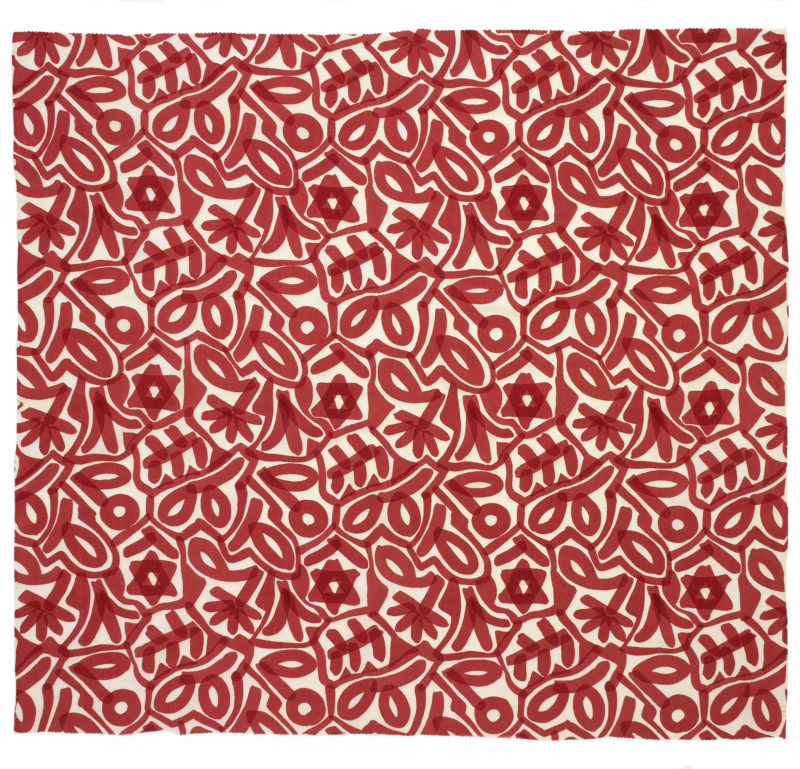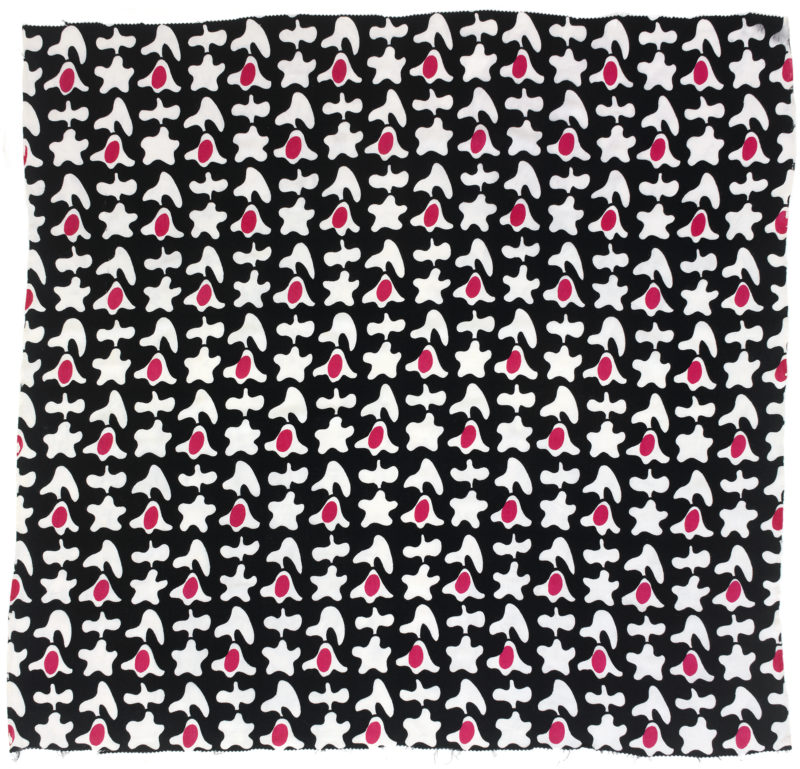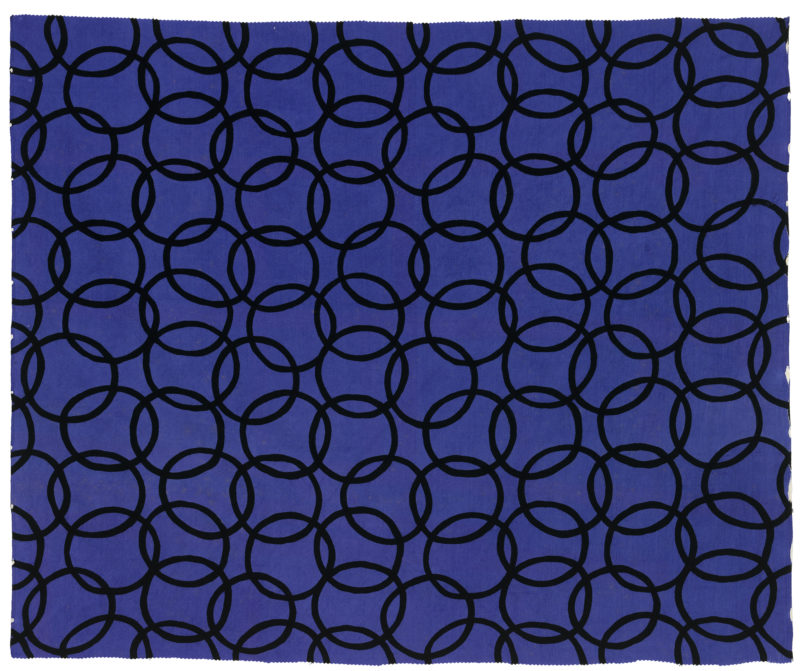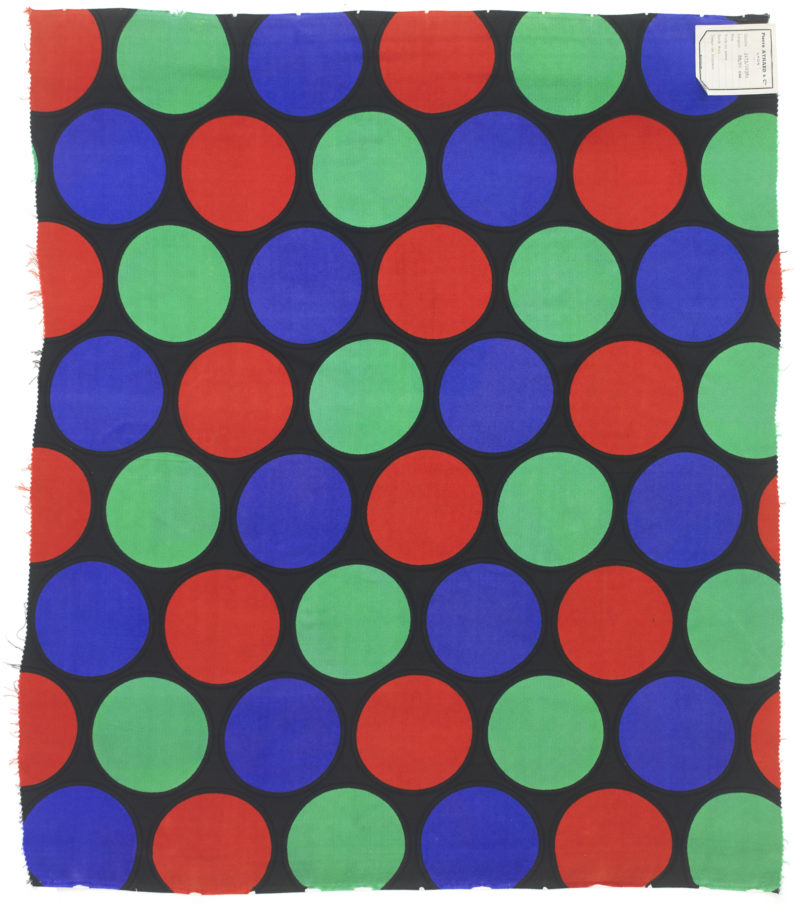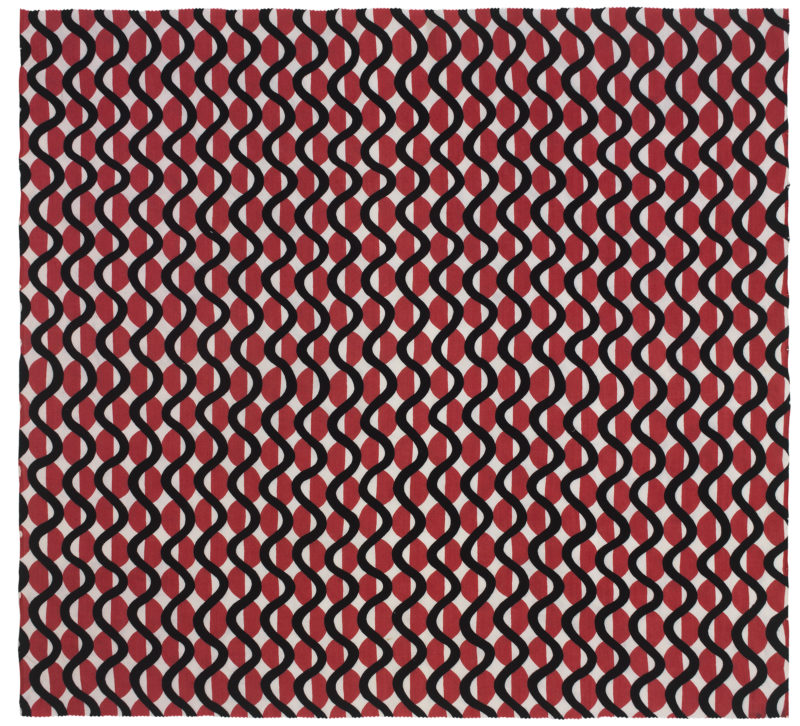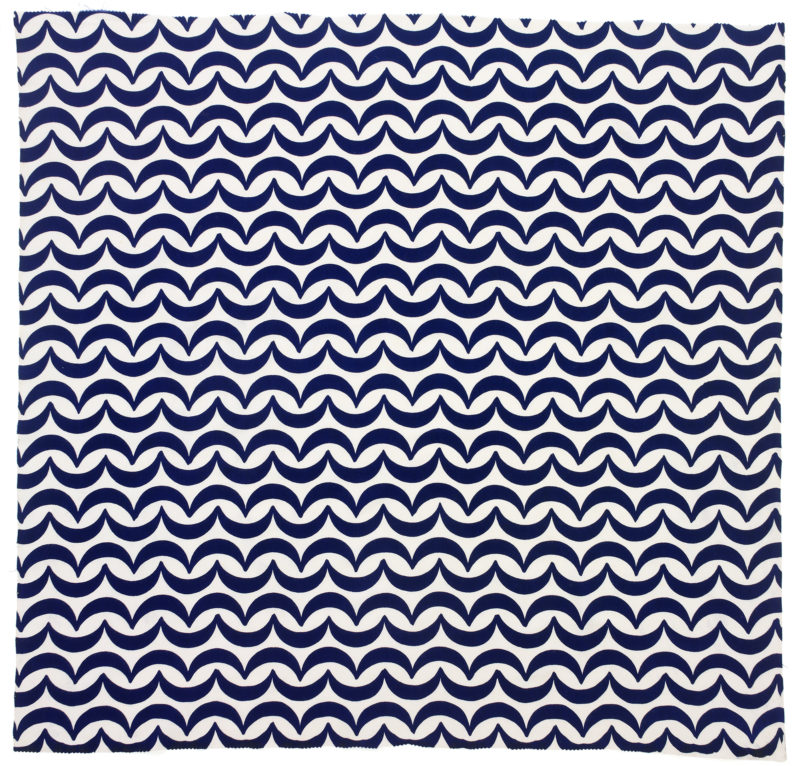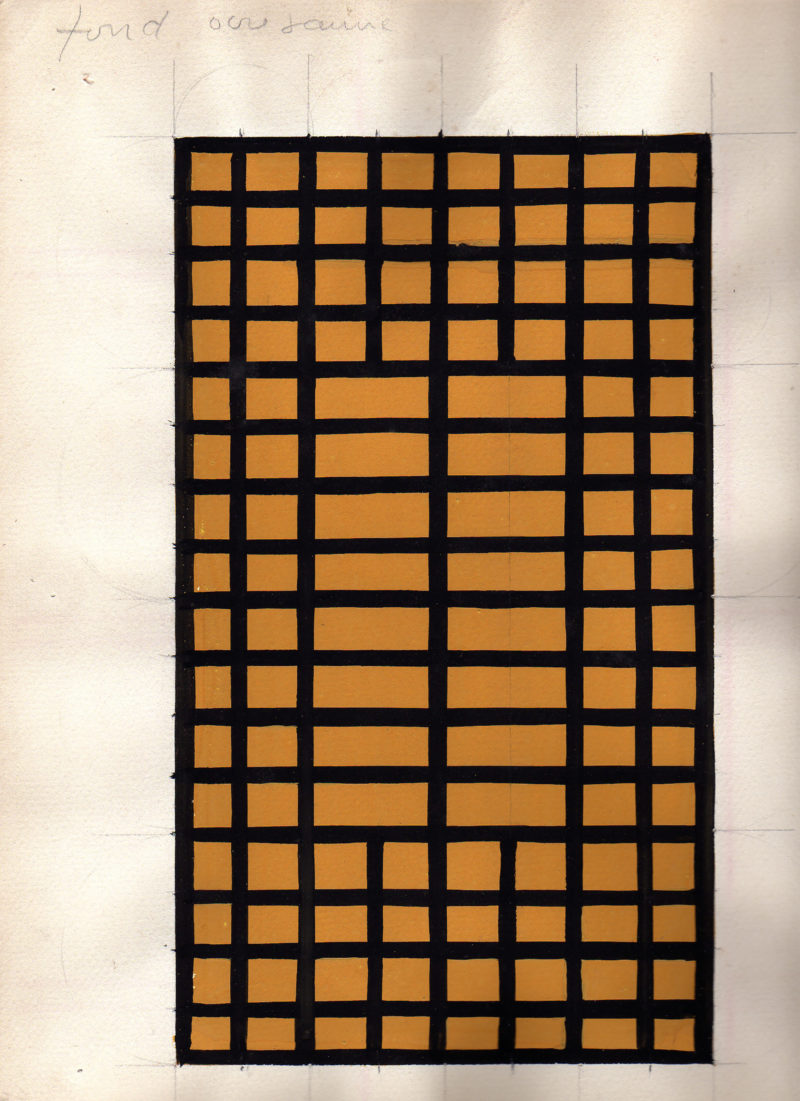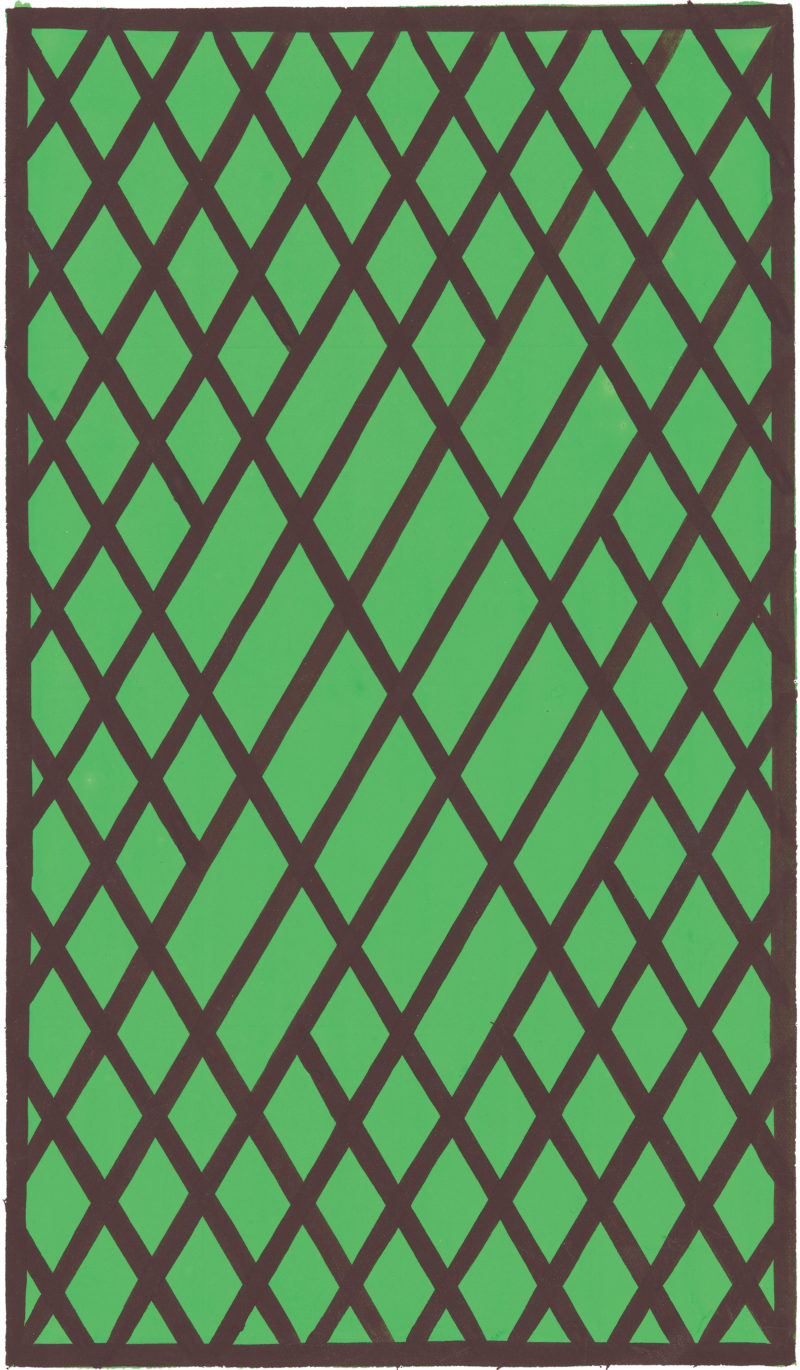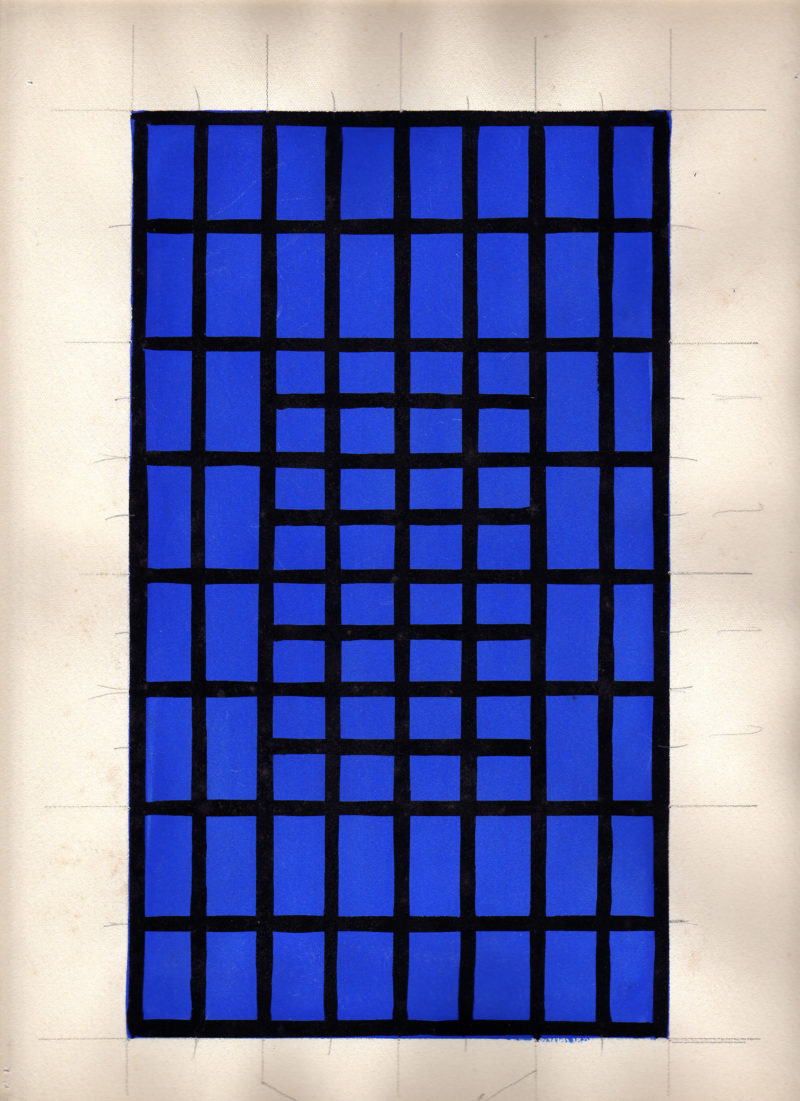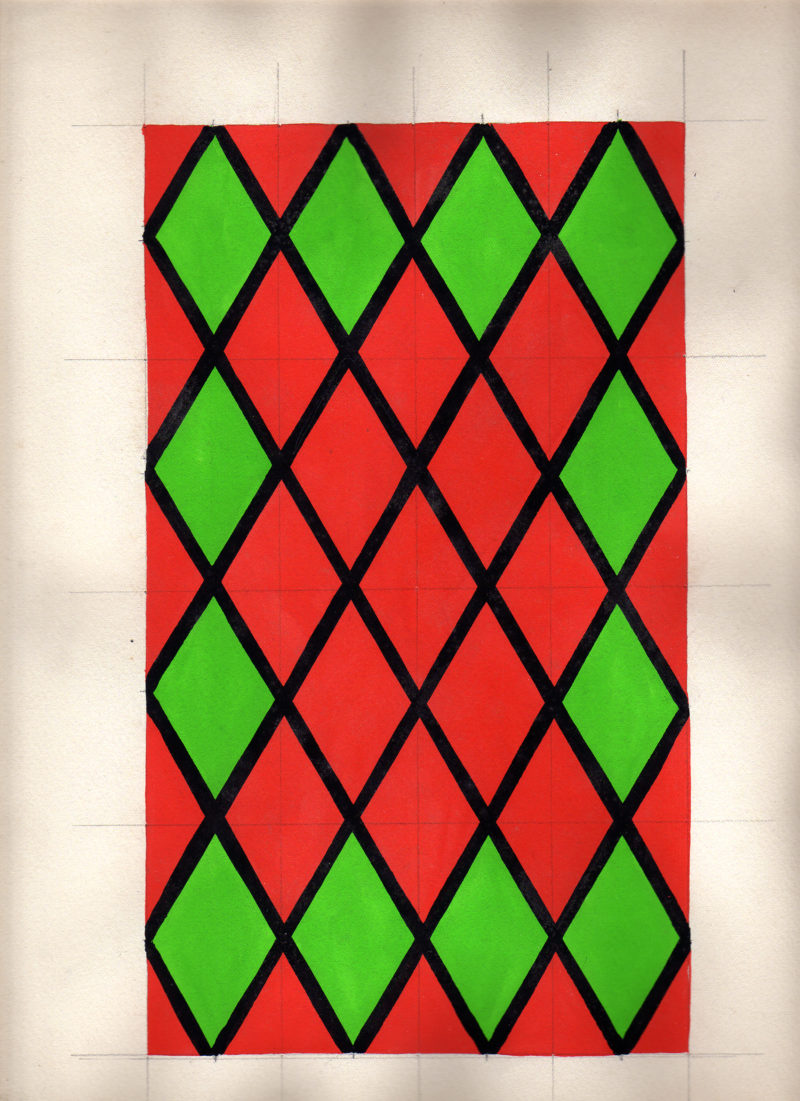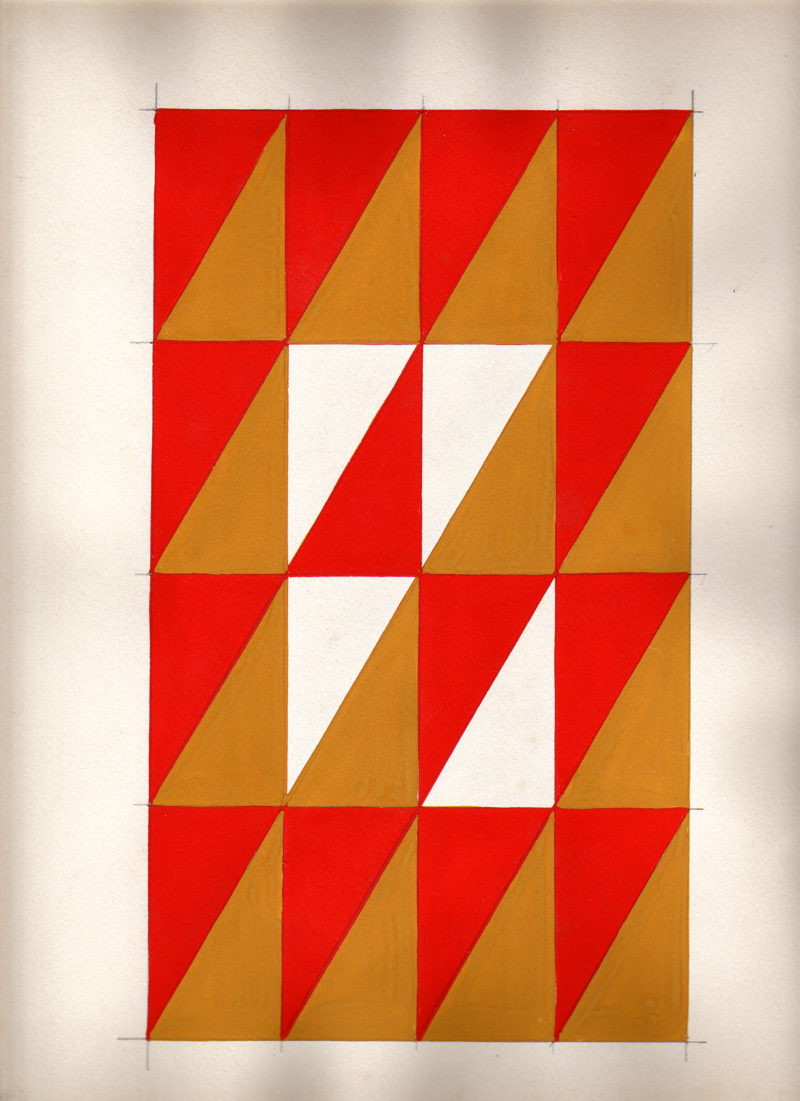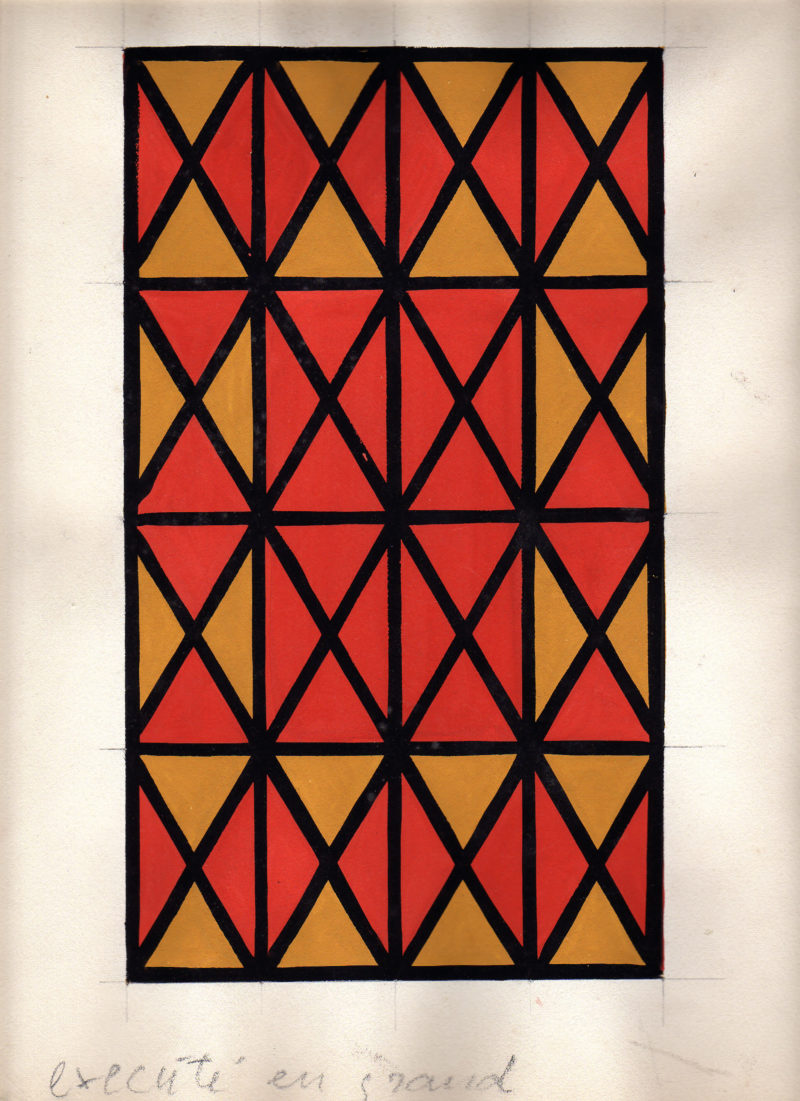Fabric
If a fabric is to be a work of art, the first essential thing is the drawing. […] The sketch for a fabric design must be well composed; the harmony between the figures and the spaces must be perfect, inasmuch as their relationship is continuous. Despite their being little known — being made for too modest a market — there are some mediaeval printed fabrics that constitute quite remarkable exemplars of this. […] And some of Alfred Latour’s fabrics are analogous to this venerable tradition. A tradition which, amplified by German expressionism on the one hand, and by the renaissance of certain popular forms of expression on the other, has been much in favour lately. […]
Given how the most elegant and refined art is also the simplest, we can affirm without the slightest reservation that Latour’s fabrics are certainly among the most elegant of the post-war years. It needed an artist of his quality — with all his gaiety and subtleness — to allow fashion a new start in those difficult days, and particularly to fill them with joyfulness.
Jean-Michel Tuchscherer
Curator of the Lyon Museum of Fabrics and Decorative Arts

